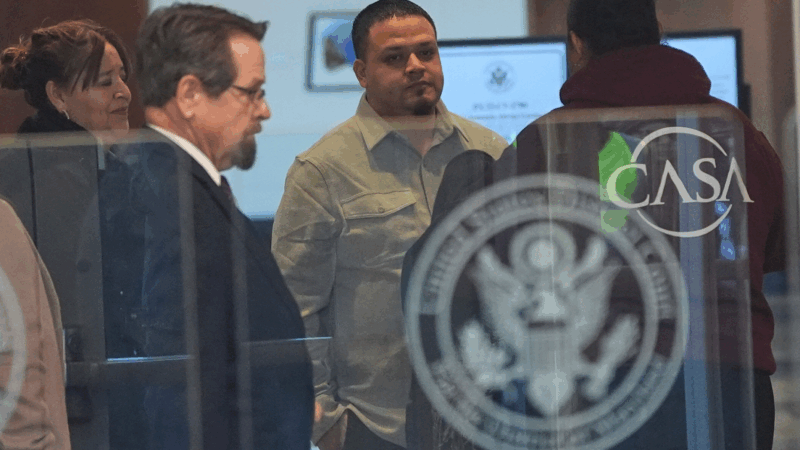Charter Schools: The Texas Example
Alabama is one of only ten states that don’t allow charter schools. Many states, including Texas, adopted charter schools in the 90s. Today, more than 113-thousand Texas children attend charter schools. As we wrap our education series, WBHM’s Bradley George takes a look at the Texas charter school experiment and what lessons it might hold for Alabama.
Texas took the charter school leap when George W. Bush was governor. He touted the initiative when he ran for president five years later.
‘We encourage parents to take a look at the comparative results of schools. We’ve got a strong charter school movement that I signed the legislation to get started in Texas.’
Charter schools were only one part of Bush’s education agenda in Texas. It also included more testing and stronger accountability rules for students and teachers. Several of these principles later became part of President Bush’s No Child Left Behind Law. Sandy Kress was an education adviser to Bush in Texas and in the White House.
‘Our hope was that this would create a vehicle for a different sort of school. A different avenue for students who were not enrolled in strong schools. An avenue for entrepreneurs to create different, maybe more effective ways and means of educating students.’
In Texas there are charter schools run by universities and traditional public schools converted into charters. When it comes to expanding charter schools, the state is aggressive. There were 20 charter schools in Texas when the program began in 1997. Today, there are more than 400. The number of schools is capped, meaning there are long waiting lists at some schools. David Dunn heads the Texas Association of Charter Schools. He wants the cap to go away.
‘We think that charter schools that have a proven record of success in terms of academic achievement and fiscal management. We think that process should be streamlined.’
The Texas legislature would have to lift the cap, but some lawmakers aren’t receptive to that idea.
‘The problem is the ones that fail don’t get closed.’
State representative Scott Hochberg is a Democrat. He’s sat on the House Public Education Committee for nearly two decades. In Hochberg’s district in southwest Houston, there’s a charter elementary school that performs well on state tests. But –
‘I also have had one of the schools that was closed down after many years of trying because basically what was found that the kids showed up for attendance then after that nobody cared if they stayed or left. So, we found them wandering around the neighborhood an awful lot. And the instructional quality was poor and the financial controls were poor.’
As in many states, the academic performance of charter schools is mixed. A Stanford University study showed Texas is one of two southern states where charter school students performed significantly worse than their traditional public school peers on reading and math tests. All this makes Sandy Kress wonder if Texas’s rapid expansion was a little too fast.
‘I think it was a little bit of, you know, come one come all. Open the door up, we’ll have some successes, we’ll have some failures. That was in the nature of the experiment. Charters were granted to people who were really not up to snuff and didn’t have the right kind of infrastructure, the right kind of leadership, the right kind of planning.’
In addition to the challenges with performance, charter schools in Texas face difficulty with funding. Across the board, salaries for teachers and administrators at charters are less than traditional public schools. And Texas law says charters can’t access state facilities money. So, charters look to the philanthropic sector or the bond market. All of this comes at a time when Washington wants states to expand charter schools further AND traditional public schools are dealing with those same issues.
‘The challenge is, of course, that the district schools have to take anybody.’
State Representative Scott Hochberg.
‘So, when a student goes off to a charter school, doesn’t make any academic progress, and turns around and comes back, then the district is faced with a job that’s twice as tough because they’ve lost that time.’
From rapid expansion to schools winning national accolades. Mixed academic performance to funding challenges. All are issues Texas has dealt with in the 15 years of its charter schools experiment. And things Alabama might want to consider before it takes the charter leap.
Russia attacks Kyiv, killing 1 and wounding many ahead of Ukraine-US talks
Russia attacked Ukraine's capital with missiles and drones early Saturday morning, killing one and wounding over 20 people a day before talks between Ukraine and the U.S., local authorities said.
Myanmar is set to hold phased elections. Here’s why they’re being called a ‘sham’
Myanmar's military rulers are holding a general election in phases starting Dec. 28 amid the country's civil war. The head of the U.N. says the vote will be anything but free and fair.
Judge to hold hearing on whether Kilmar Abrego Garcia is being vindictively prosecuted
A federal judge this week canceled the trial of Kilmar Abrego Garcia, and scheduled a hearing on whether the prosecution is being vindictive in pursuing a human smuggling case against him.
Thailand and Cambodia sign new ceasefire agreement to end border fighting
In addition to ending fighting, the agreement calls for no further military movements by either side and no violations of either side's airspace for military purposes.
Top Instagram reels from Goats and Soda in 2025: Plumpy’Nut, aid cuts, soccer grannies
Our most-viewed Instagram videos include reports from a Rhode Island factory that makes special food for malnourished children and from a tournament for soccer-playing "grannies."
Should the U.S. model its vaccine policy on Denmark’s? Experts say we’re nothing alike
The Trump administration wants to revamp U.S. childhood vaccination recommendations to align with some other peer nations, including one tiny country in northern Europe.








